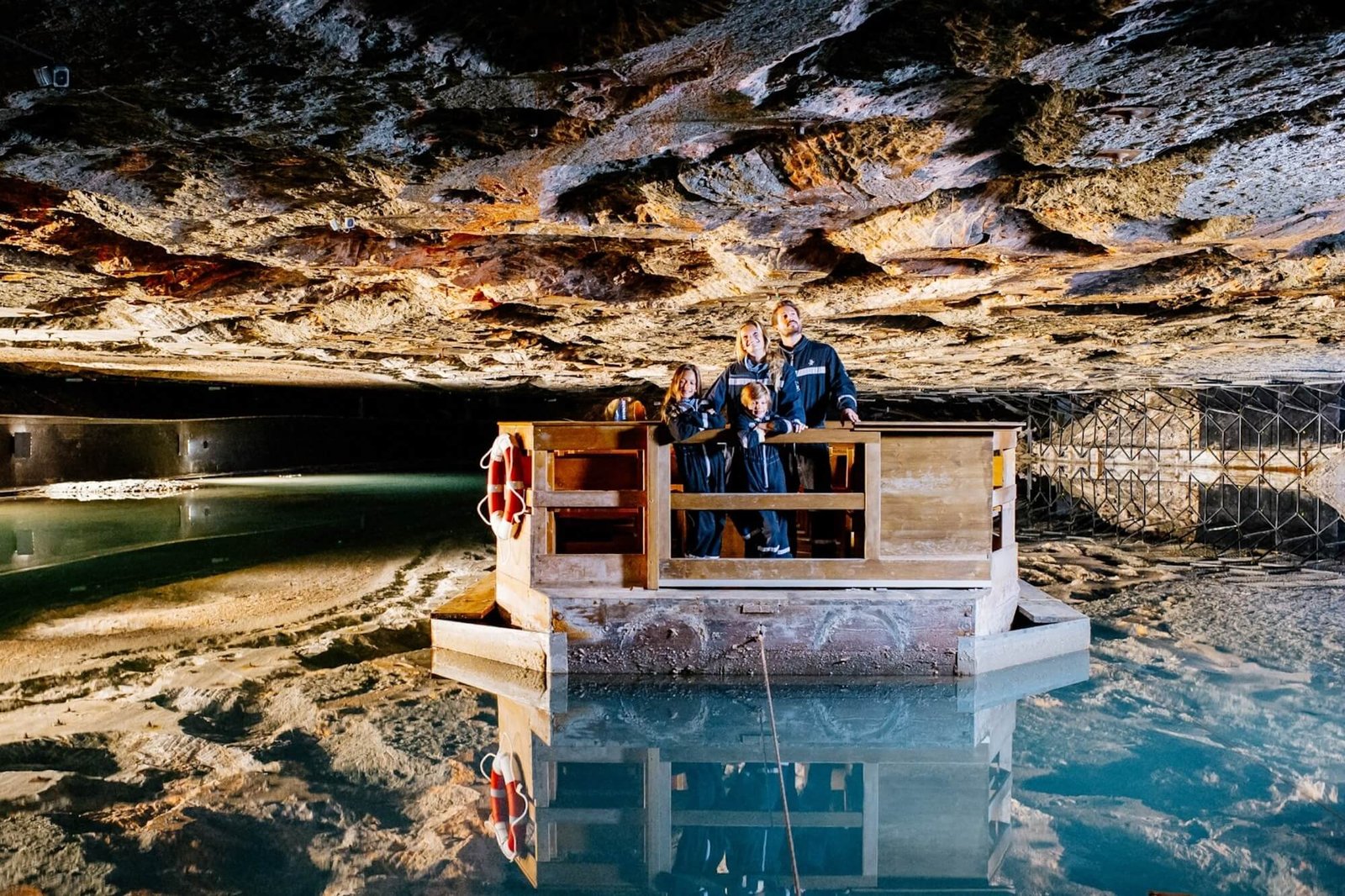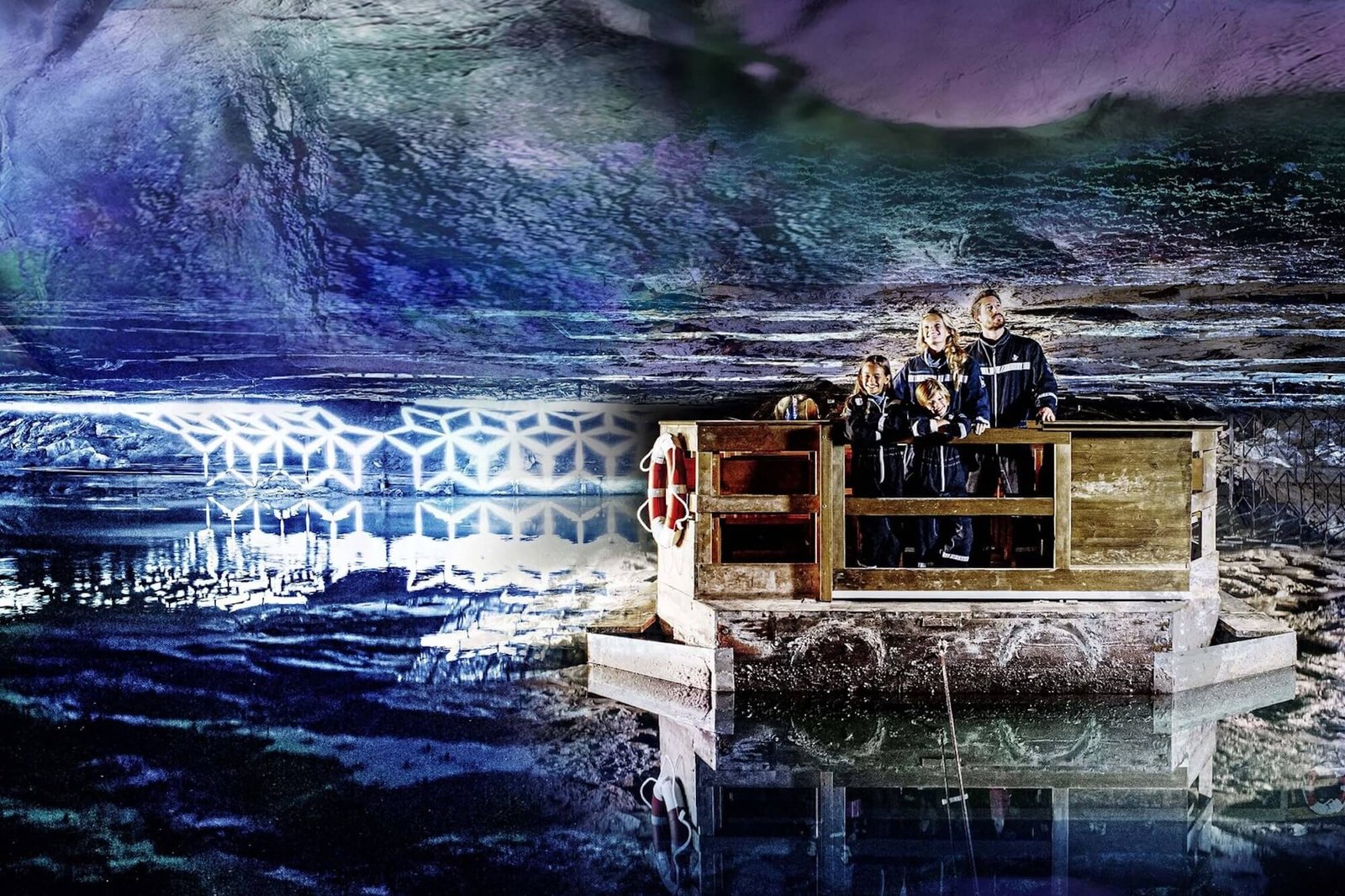
Self guided tour of the Berchtesgaden Salt Mine
Discover what most visitors miss during their to trip to Berchtesgaden’s Salt Mine with our detailed step by step tour.
From the breathtaking Eagle’s Nest road and its 5 tunnels to the original brass-lined lift (elevator) hewn into the mountain, use our step by step guide to find out what awaits you on your visit to the Eagle’s Nest.
- 1. Time to Pull On Your Miners’ Overalls
- 2. Board the Miners’ Train and Mind Your Head!
- 3. Tunnelling into the Mountain
- 4. The First Miners’ Slide
- 5. Finding New Veins of White Gold
- 6. A Monument to the Fairy-tale Prince Ludwig II
- 7. The Evolution of Salt Mining in Berchtesgaden
- 8. A Light Show Deep Underground
- 9. Tough Work in the Berchtesgaden Salt Mine
- 10. Berchtesgaden Salt Mine’s Piece de Résistance: The Mirror Lake
- 11. Royal Engineering That Has Stood the Test of Time
- 12. A Subterranean Funicular Railway
- 13. A Return Train Ride to the Surface
1. Time to Pull On Your Miners’ Overalls
The salt mine in Berchtesgaden operated for hundreds of years before opening as a tourist attraction in 1840. Elements of the mine are still in use today, however, the areas you can visit have been retired from service.

Once you’ve either bought your ticket from the desk or pre-booked online, you can enter when your group time is called and use the lockers to store your belongings. Next come your miner’s overalls; there are ladies’ and gents’ dressing rooms where you’ll be given your miners’ overalls for the excursion deep into the mine.
2. Board the Miners’ Train and Mind Your Head!
Now suitably attired you’ll enter the queue for the train (yes, a subterranean mining train) and also have your last chance to head to the toilets/restrooms for the duration of the excursion.

When the time comes, you’ll be invited to ‘board’ the train. In reality it’s a bit more like getting on a motorcycle with one leg either side of the central carriage bench. With everyone wearing their miners’ overalls and sat astride the miners’ train there comes the inevitable group photo. There will be a chance to purchase a copy as a memento at the end of your trip into the mine.
3. Tunnelling into the Mountain
It’s said that safety precautions are rather lax in Germany and the next five minutes proves the point. You’ll now ride some 650m (2,100ft) into the mountain on the miners’ train through an extremely narrow tunnel. Make sure to keep all limbs (and children) safely away from the rather close tunnel walls at all times. Use of selfie sticks here is definitely verboten (forbidden) and may well see you end up in the Krankenhaus (hospital)…
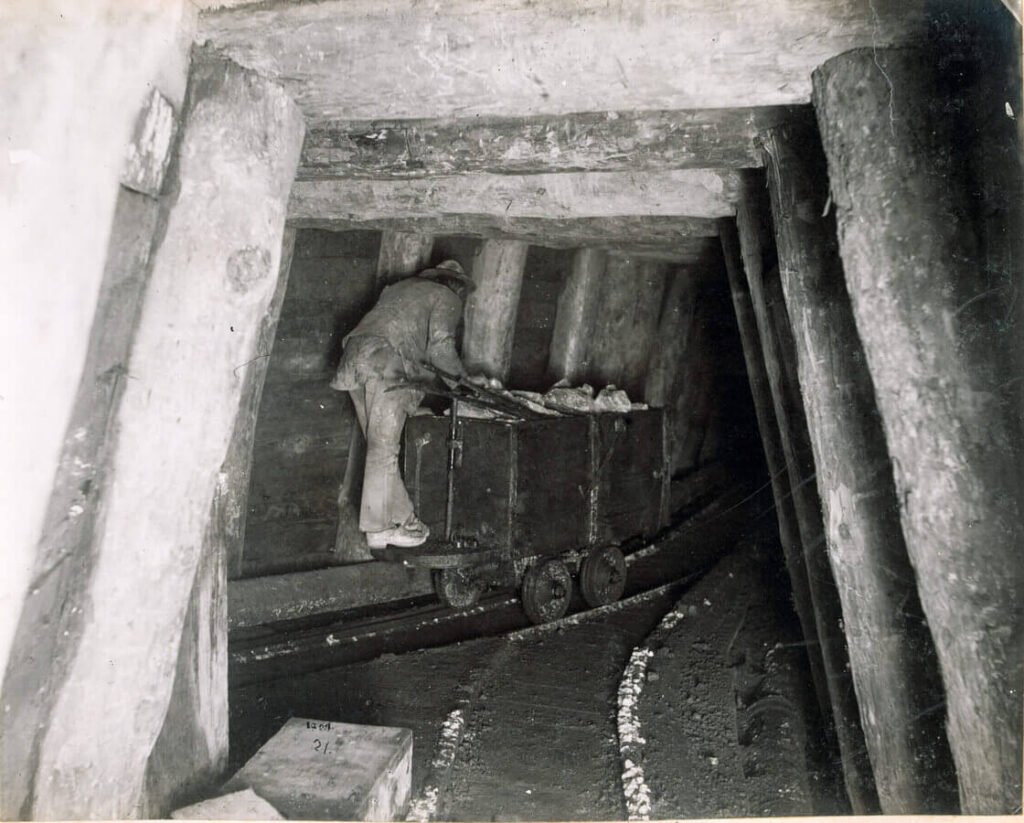
On the topic of accidents, you will see a large sign wishing you “Glück auf!” as you channel deep into the mine. Glück auf! is a traditional German miner’s greeting wishing you the best of luck both in locating the precious minerals the mine has to offer and also safely returning from the depths mine. Consider the safety provisions back in 1517…
4. The First Miners’ Slide
With your journey into the mountain complete you arrive at the Kaiser Franz pit, where the first wooden miners’ slide awaits. This 34m (110ft) slide was, once, a track for the mine carts but has since been re-purposed as a slide for tourists exploring the mine to enjoy. In groups of 3-4 you need to hold on to each other’s shoulders and keep your legs outstretched to (gracefully!) speed down the polished timber rails to the bottom. Keep an eye out behind you for the next group.
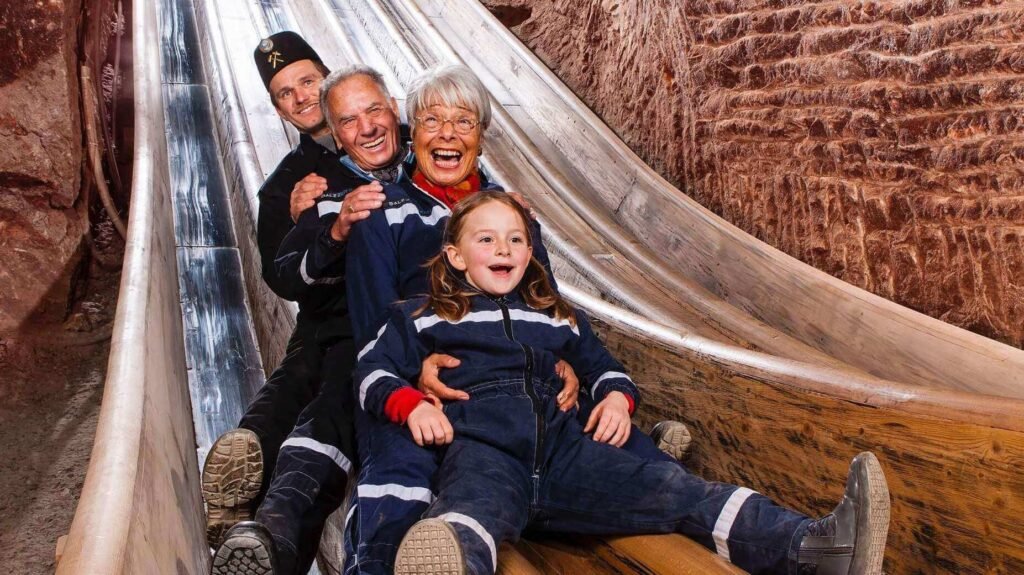
5. Finding New Veins of White Gold
At the bottom of the slide you will find yourself in the Salt Cathedral, a huge chamber hewn from the surrounding rock around 250 years ago. The centrepiece of the chamber here is the wooden structure sat atop a test shaft leading some 150m into the rock. Such test shafts were used to take samples of the rock so that salt content could be measured and future mining planned.
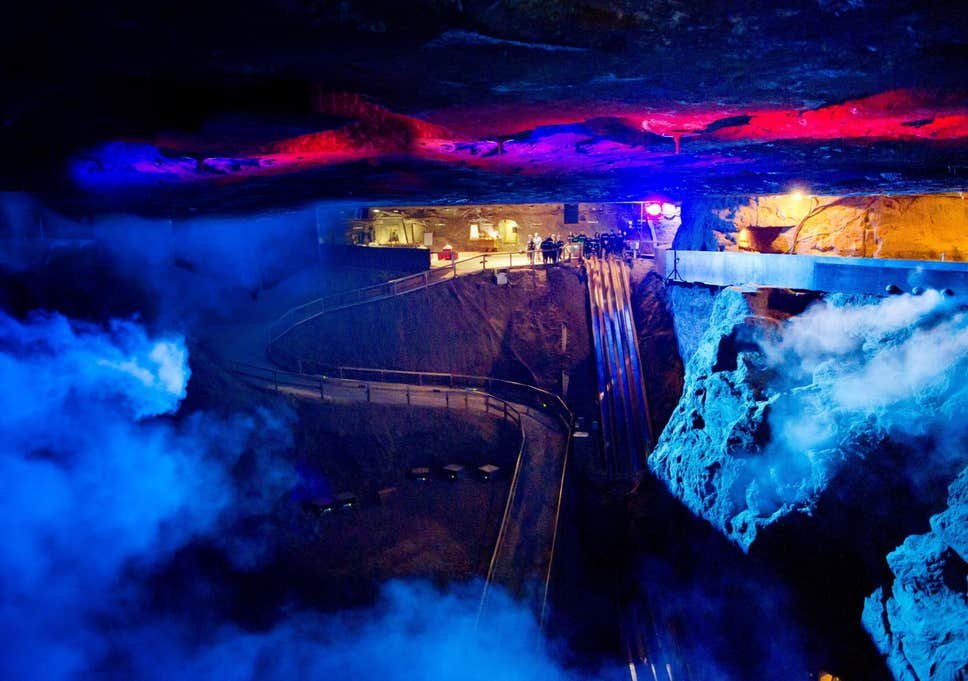
6. A Monument to the Fairy-tale Prince Ludwig II
Taking the passageway to the end of the Salt Cathedral chamber you’ll turn left and follow one of the many tunnels in the mountain that ultimately leads to the underground lake. To you right along this tunnel you’ll be able to stop off at the Salt Grotto.
This grotto is dedicated to Prince Ludwig II of Bavaria, who spent much of this childhood summers in Berchtesgaden and is perhaps best known for his fairy-tale castle building, chief among which was Neuschwanstein. Here in the Salt Grotto you’ll also see beautiful translucent salt rocks set into the stonework arches; their colouration is a consequence of the mineral deposits within the rock and transparency a consequence of their crystalline structure.
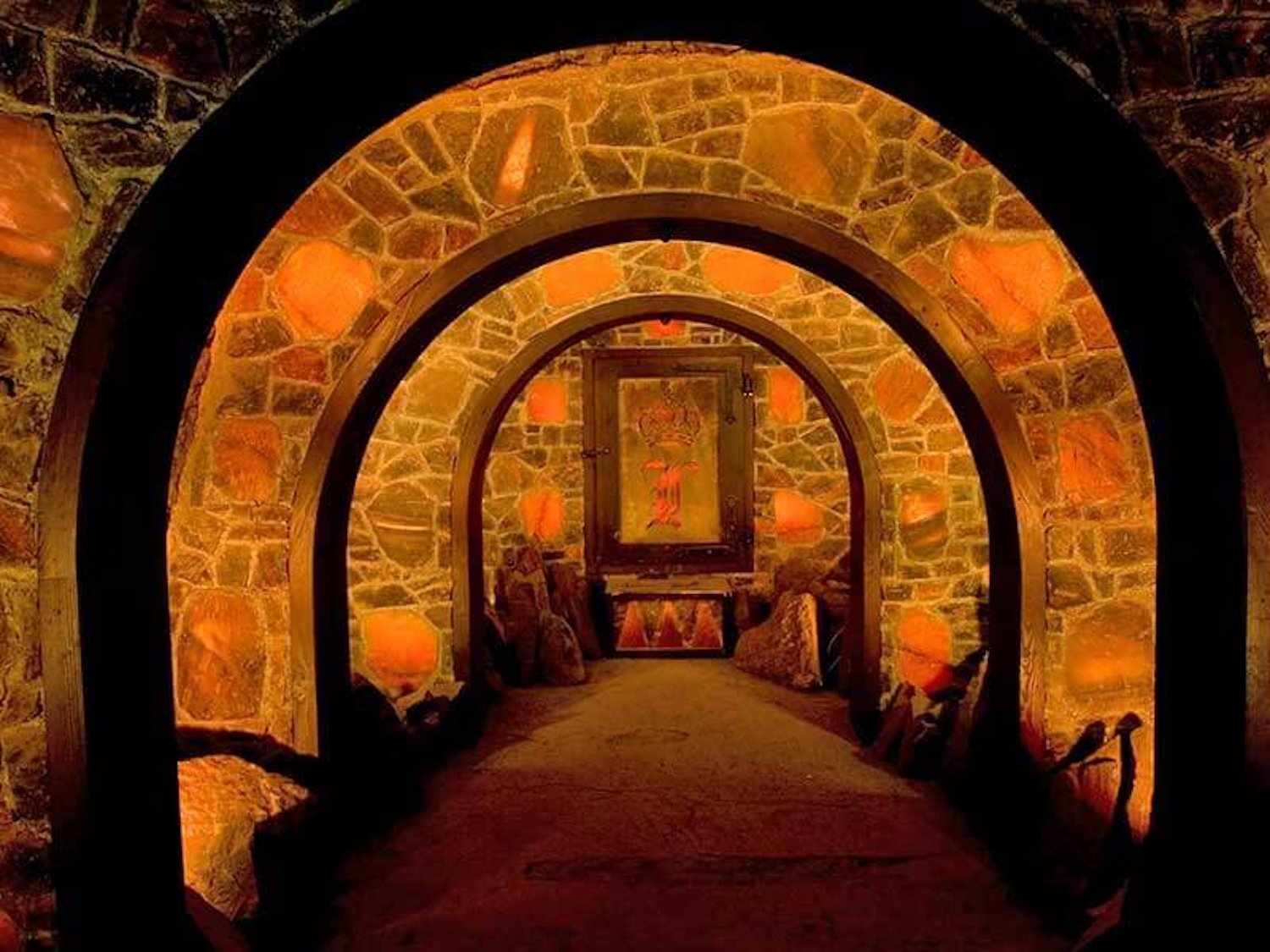
Leaving the Salt Grotto, you’ll pass through yet another set of double doors. It’s worth noting that these double doors are essential to stop the draughts that would otherwise whip through the 25 miles (40km) of tunnels that make up the salt mine.
7. The Evolution of Salt Mining in Berchtesgaden
The next chamber along the tunnel towards the underground lake is dedicated to the industry of mining itself and how the salt mine in Berchtesgaden has evolved through the years. The extensive model and film are well worth it but it’s the artefacts that help bring you close to the real world of mining. Make sure you check out the genuine examples of the equipment and uniforms used by various generations of miners.
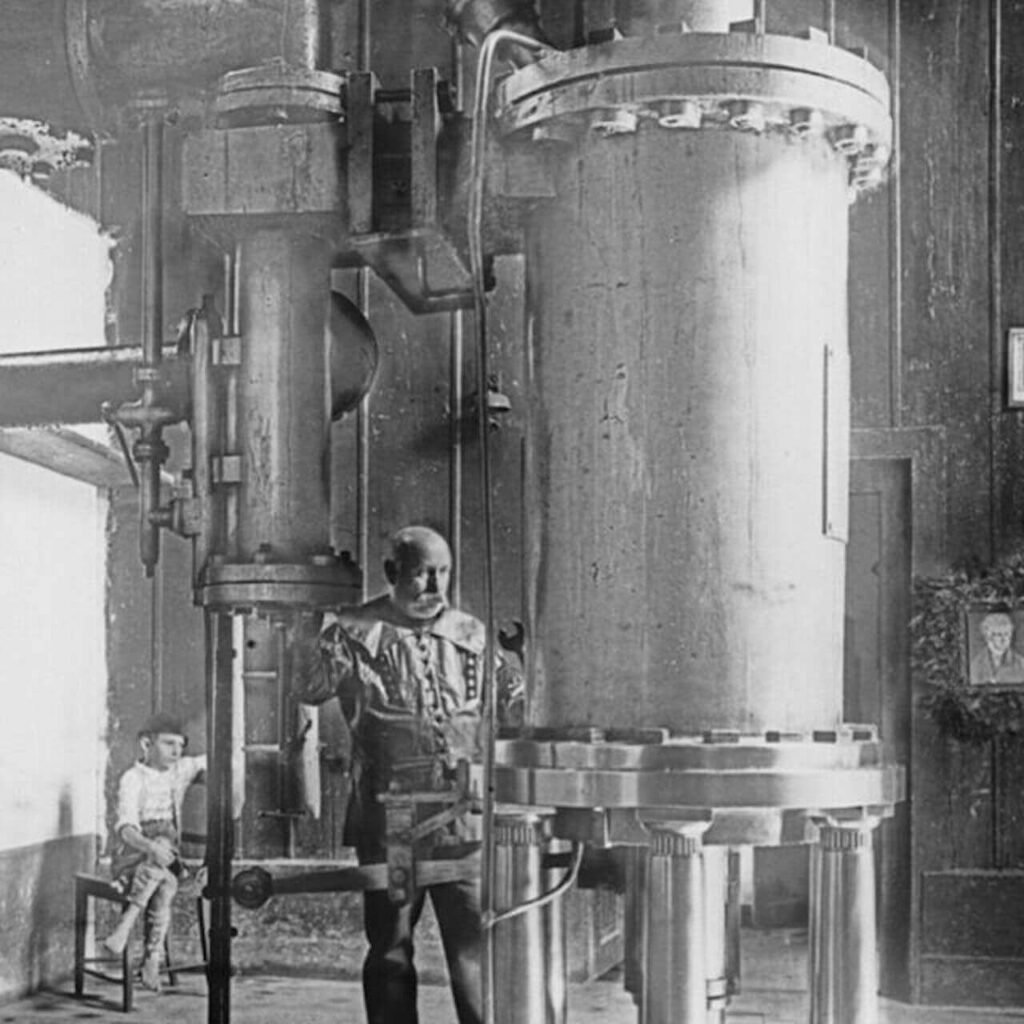
Leaving the model chamber, you’ll continue along the tunnel towards the underground lake. After a minute or so you’ll see what is known as a blind shaft to your left-hand side. This is one of the many shafts that connect the various levels of the tunnel systems here and is referred to as being ‘blind’ since it doesn’t connect to the surface. These blind shafts are the main routes between levels and such you can see all sorts of pipework, cabling, ladders, lifts and equipment clustered around the opening.
The next nook along the tunnel contrasts the type of machinery in use today with the distinctly manual process in use at the turn of the last century. Next blue, mechanised face of modern alpine mining are two portraits of miners at work. On the left a traditional miner on the job with nothing more than a pick axe.
Such relentless manual work led most to strip down to their waists whilst at work despite the ambient temperatures of around 7 degrees Celsius (45 Fahrenheit) in the mines. Such work proceeded at a painful 6 centimetres (2.4 inches) per hour.
By comparison, the modern miners in the right-hand portrait achieve close to 2 meters’ progress per day (6.5 feet) utilising pilot holes into the rock and dynamite blasting. Once blasted, the blue machine you can see in the cavern is then utilised to advance through the rock, make good the sides of the tunnel and also convey the rubble backward to be taken away on small locomotives like the one that brought you underground earlier in the trip.
Leaving the tunnelling equipment behind you, you’ll continue along the passage towards an example of more modern drilling equipment used in the salt mines: an airlift drilling rig. These pieces of machinery are specialised in extracting water and debris from deep wells using compressed air. Up on the wall you can see a pressure gauge in its yellow housing.
8. A Light Show Deep Underground
Following the passage along you’ll next see the lights of the Magical Salt Room, where the role that salt plays in both the human and economical stories of Berchtesgaden is explored through a light show and projections.
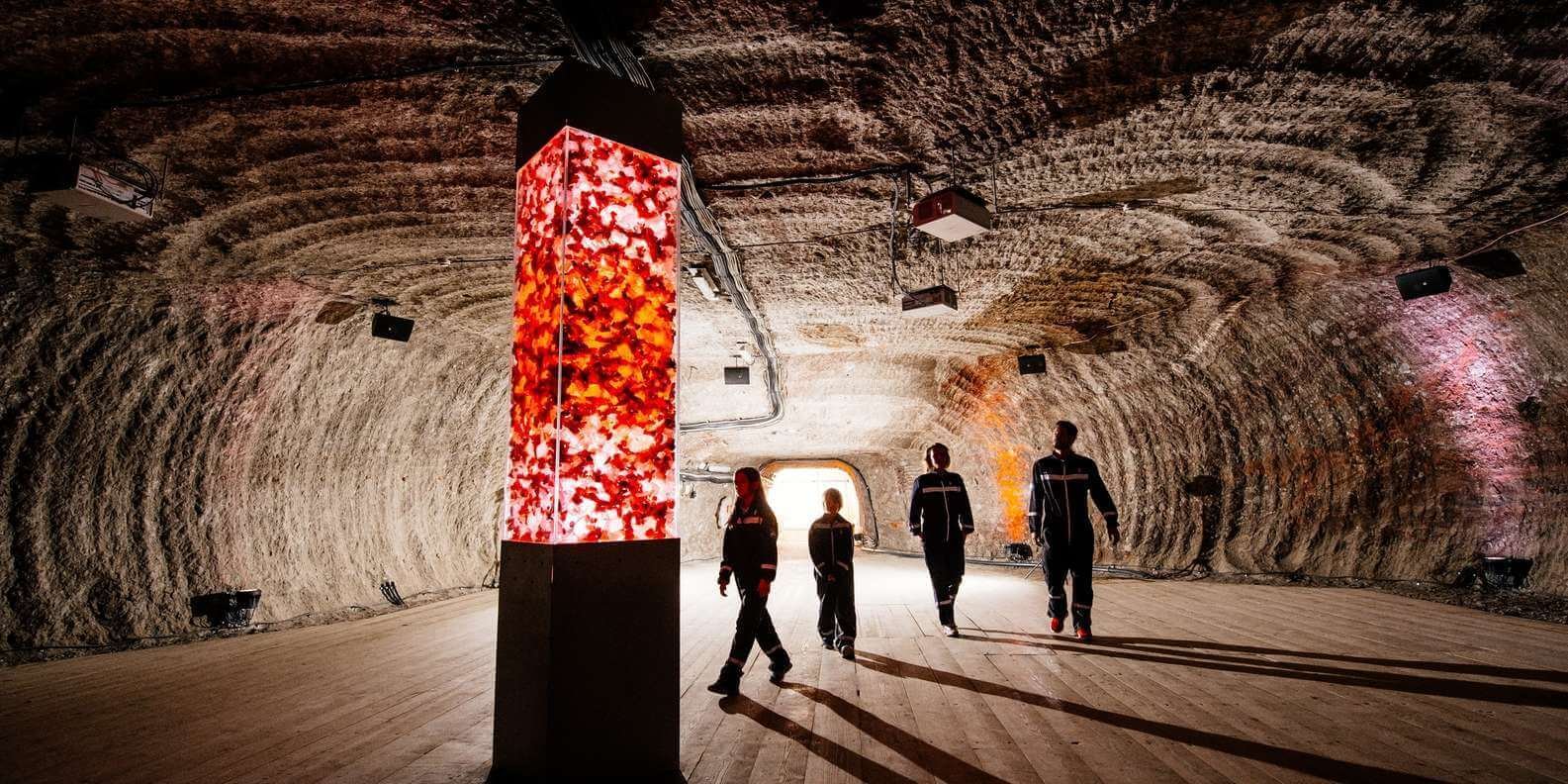
9. Tough Work in the Berchtesgaden Salt Mine
En-route from the Magical Salt Room to the next slide you’ll catch sight of a wooden winch. Believe it or not, this winch was powered by 4 strong men up until the turn of the last century. Such winches were used to haul trucks full of rock up from lower levels along wooden tracks just like the ones you have been sliding down today.
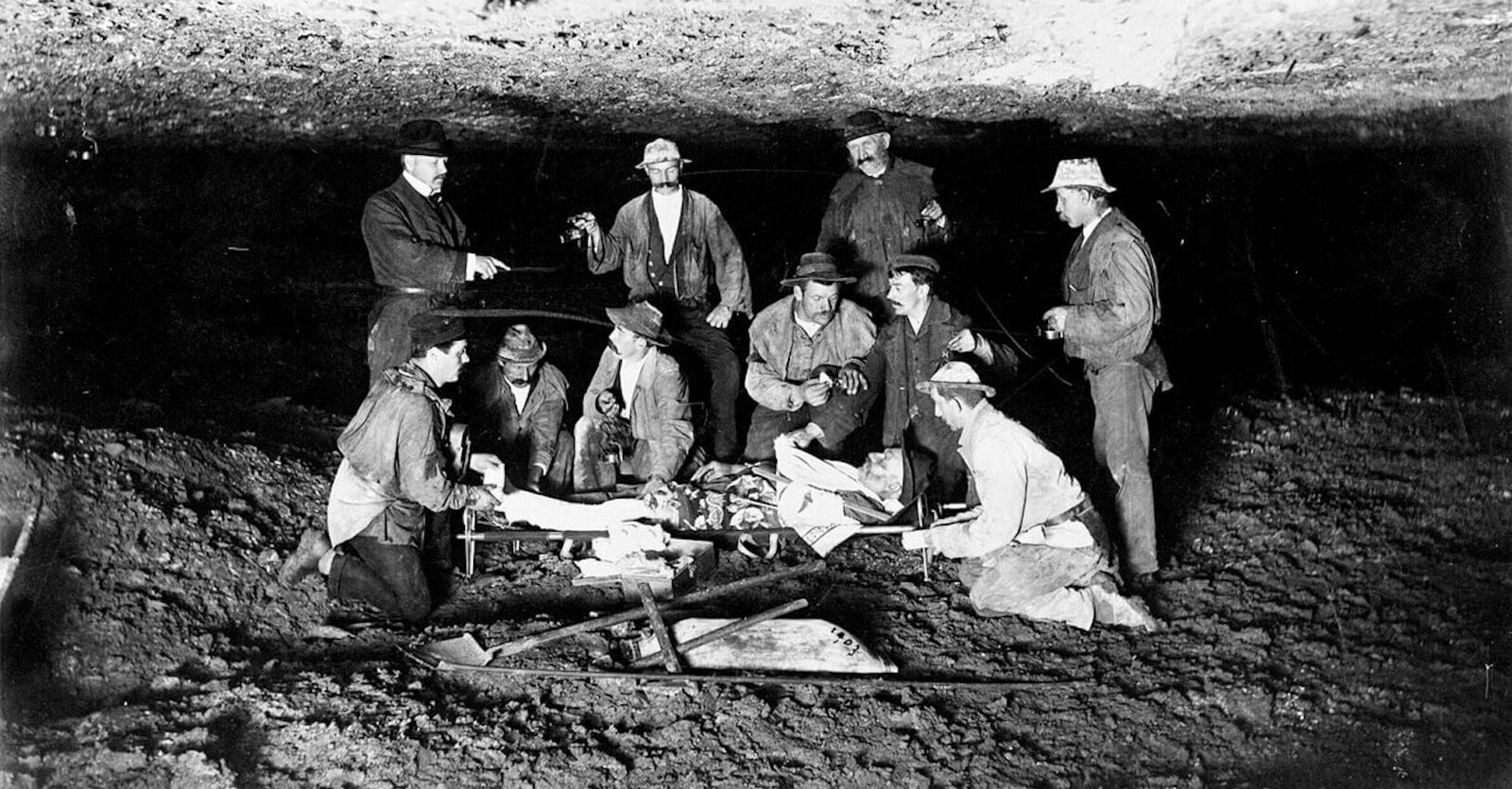
Right on cue is another wooden slide to enjoy, this time slightly less of a drop but slightly longer. There is a set of stairs to the side…just in case.
10. Berchtesgaden Salt Mine’s Piece de Résistance: The Mirror Lake
At the bottom of the second slide you’ll set foot onto a timber boardwalk and catch first sight of the Mirror Lake. The lake is in fact a partially emptied sink work, a facility where water was used to dissolve the salt from surrounding rocks and form a salty solution known as brine.
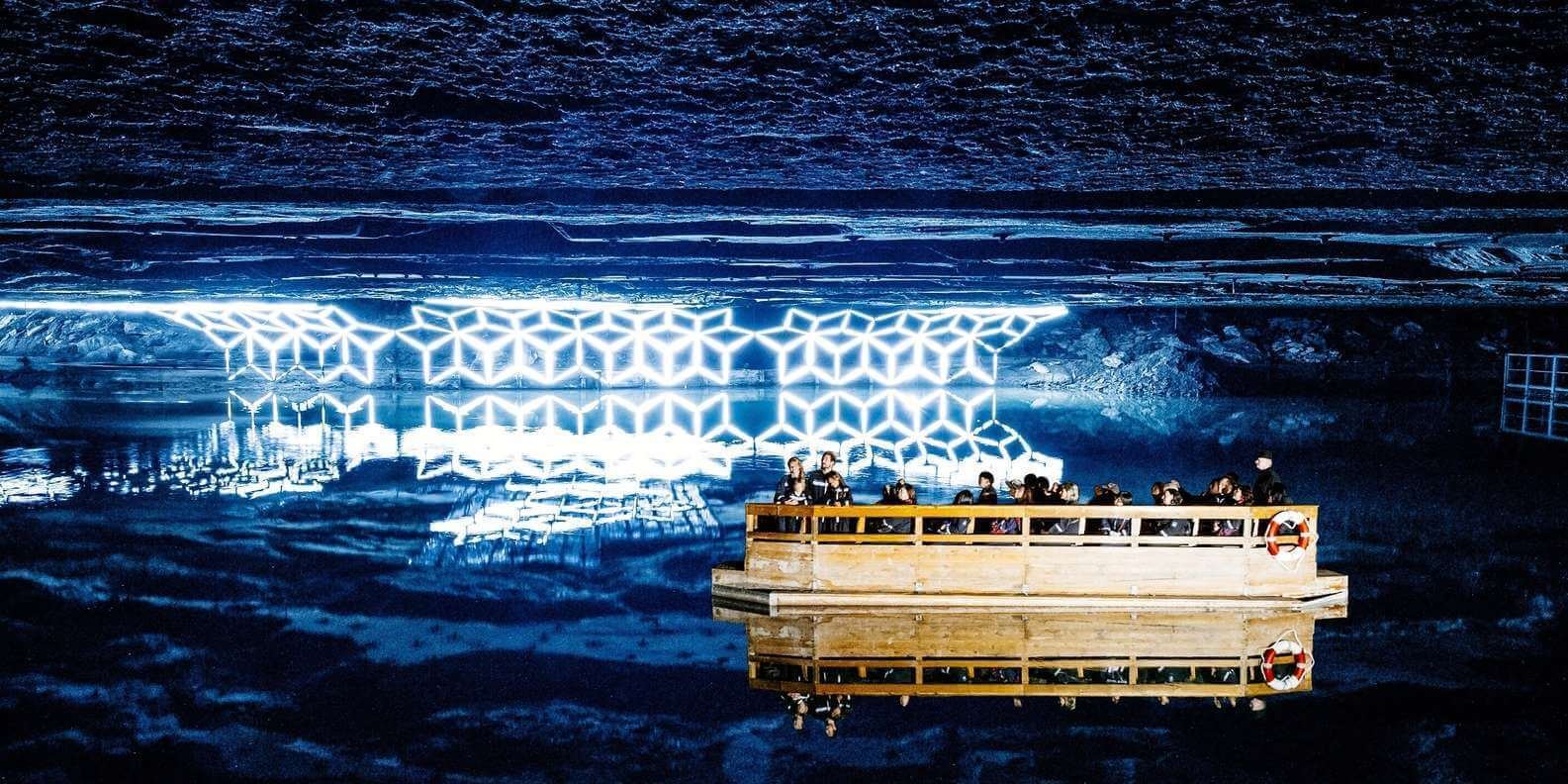
The Mirror Lake is a partially emptied brine works and has been converted into this jaw-dropping underground boat ride. Consider that the original water level would have been close to the ceiling. Traversing the water in the raft you’ll be able to see through the crystal-clear water in places to the bottom of the ‘lake’ where the insoluble elements of the rock are still lying in rest. Reaching land on the other side of the lake you’ll be able to sample the salty water. The % salt content of the water is in the region of 27%, the saturation point for water. For the sake of comparison, consider that water from the ocean is typically ‘just’ 3-4% salt content.
11. Royal Engineering That Has Stood the Test of Time
After crossing the Mirror Lake (and perhaps taste-testing the water) your next stop is the Reichenbach Pump. The tunnel leading to the pump exhibits beautiful patterns in the rock, formed by the salt deposits within. You might also notice how smooth the rock is…yes, it’s another opportunity to taste test the salt content. Just imagine how many tourists since 1840 have licked that rockface!
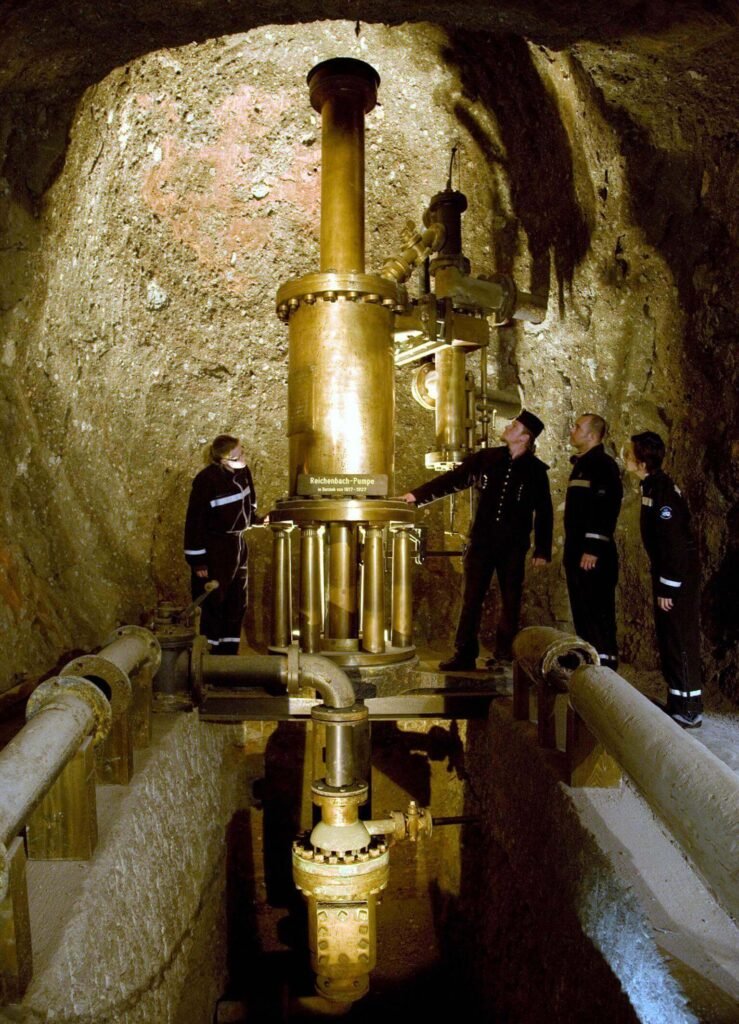
Once past the second taste test and through the next set of timber double doors you’ll find yourself in the Reichenbach Pump chamber. On the wall of the chamber is a portrait of royal engineer Georg von Reichenbach, who was responsible for the design and fabrication of the 14-tonne pump that you will see in this chamber.
Assembled using the specially designed tools that are also in a display case in this chamber, the pump used water pressure alone to drive brine over a vertical change in height of over 350 meters (1,200 feet). Commissioned in 1817, the pump required no major repairs until some 110 years later in 1927.
12. A Subterranean Funicular Railway
Leaving the Reichenbach Pump chamber, you’ll turn the corner to find yet another form of subterranean transport – a funicular railway! This funicular ascends some 23 meters (75 feet) along the so called Ferdinandberg Sohle, atop which you’ll find a pack of stuffed Chamois (a goat-like animal native to this region).
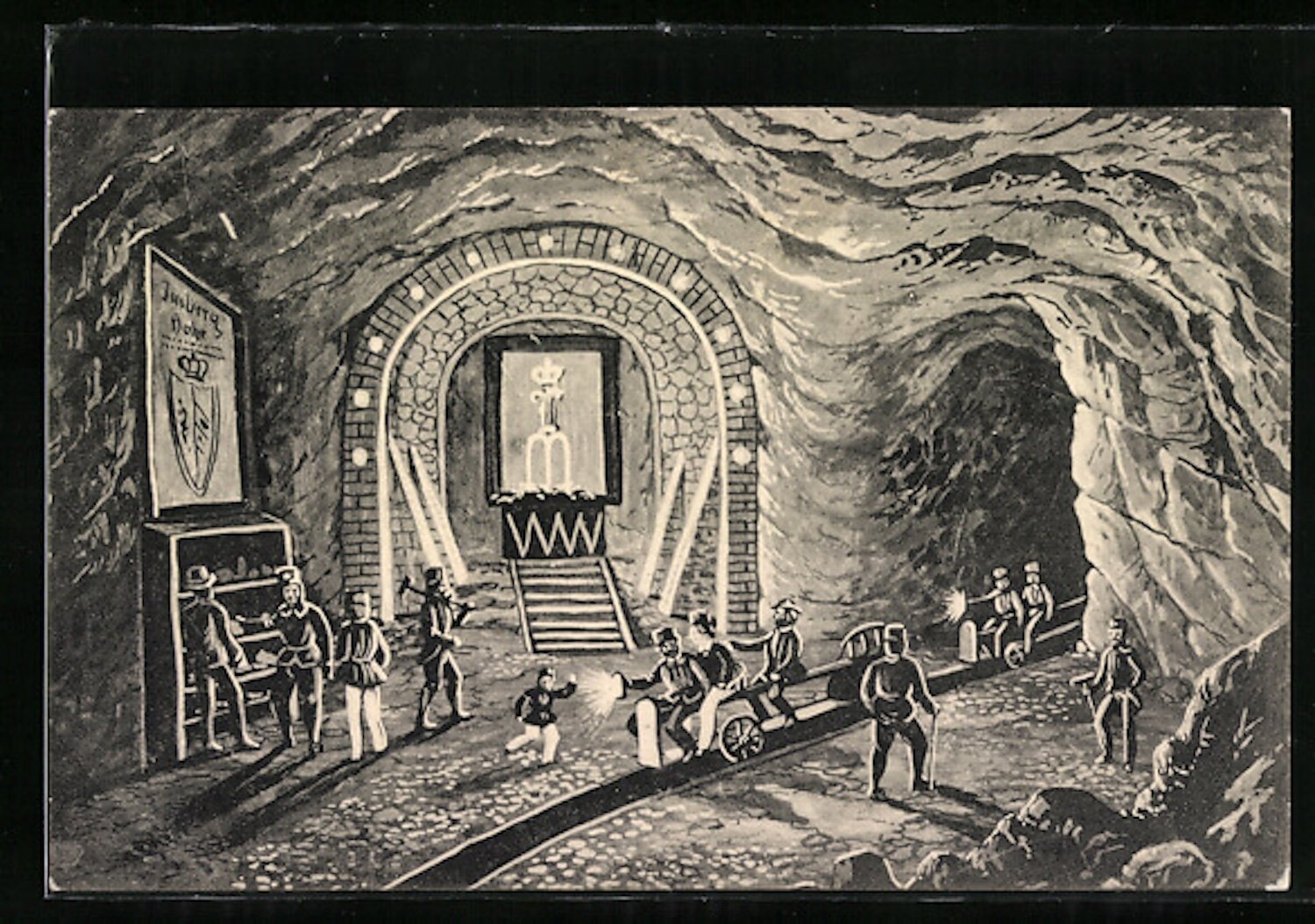
Like a salt lick you may have seen supplied to livestock on a farm, the Chamois are said to have had an affinity for the rock in the area here owing to the high mineral content – a clue that helped lead early pioneers to the salt-rich rock in the area.
13. A Return Train Ride to the Surface
Before getting back on the miners’ train for your brisk downhill journey out of the mine, you’ll walk along a corridor lined with many marble plaques that were used by both the senior members of the monastery in Berchtesgaden (so-called Prince Provosts) and rich landowners to stake out their respective mining areas.
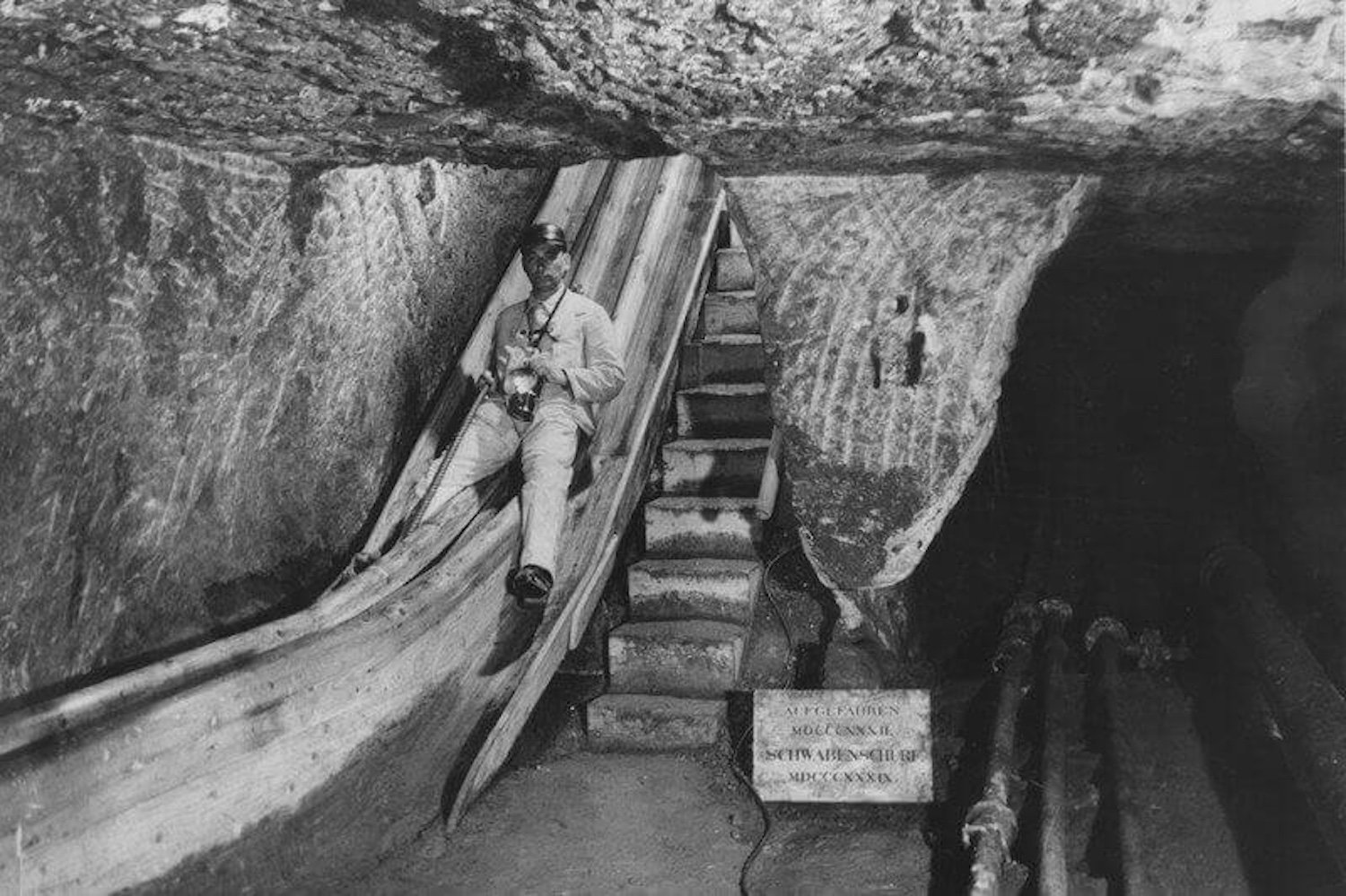
Your journey underground is rounded off by the speedy journey back outside on the miners’ train and the opportunity to purchase a photo memento either from your train ride or the first wooden slide from the kiosk next to where the train drops you off.

